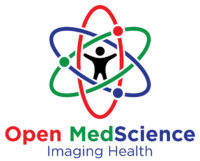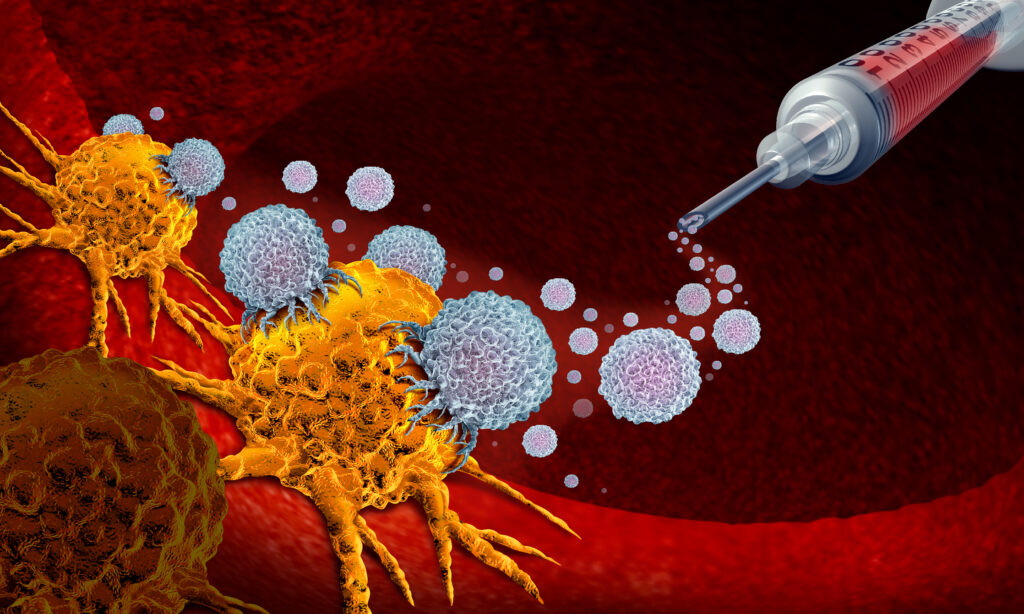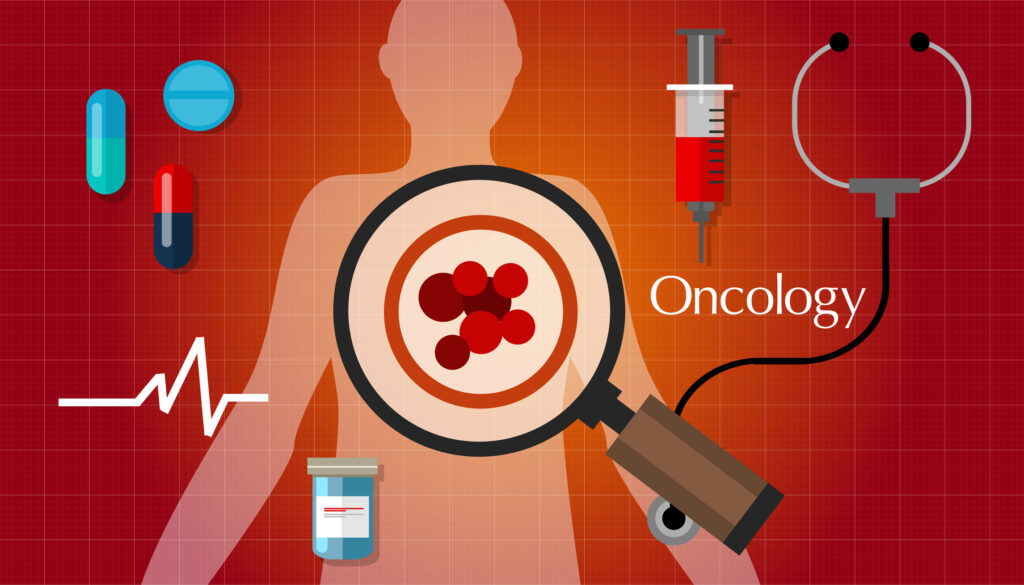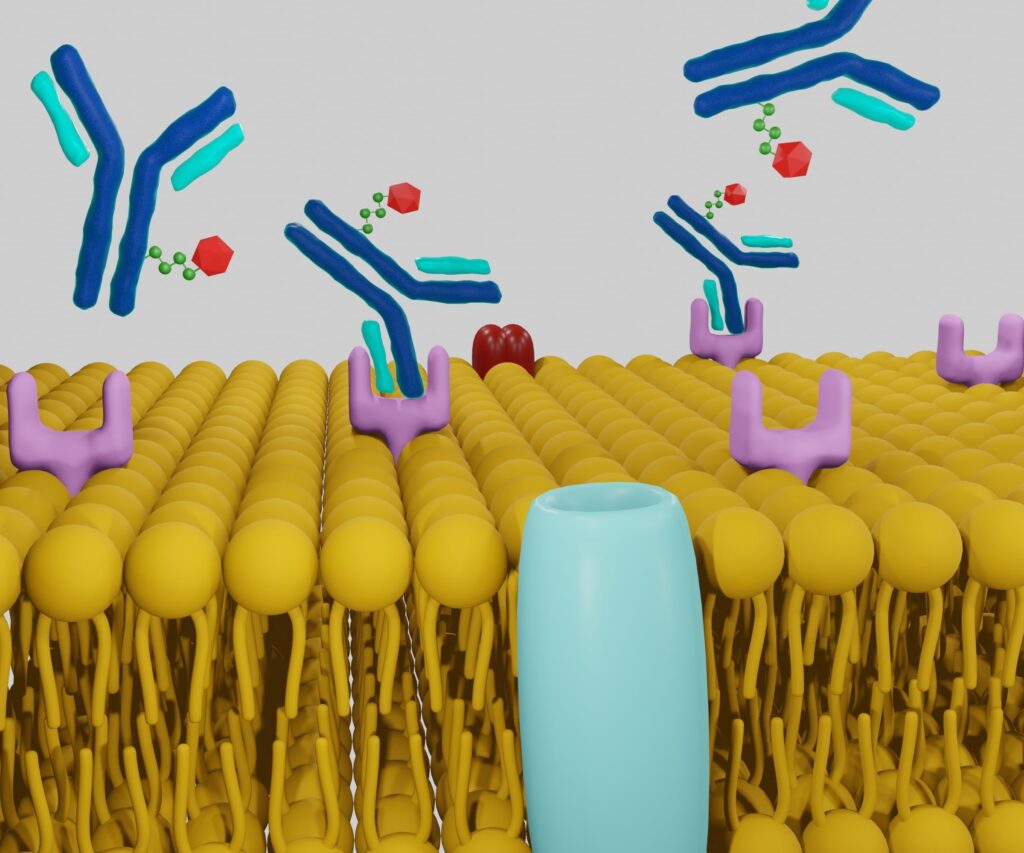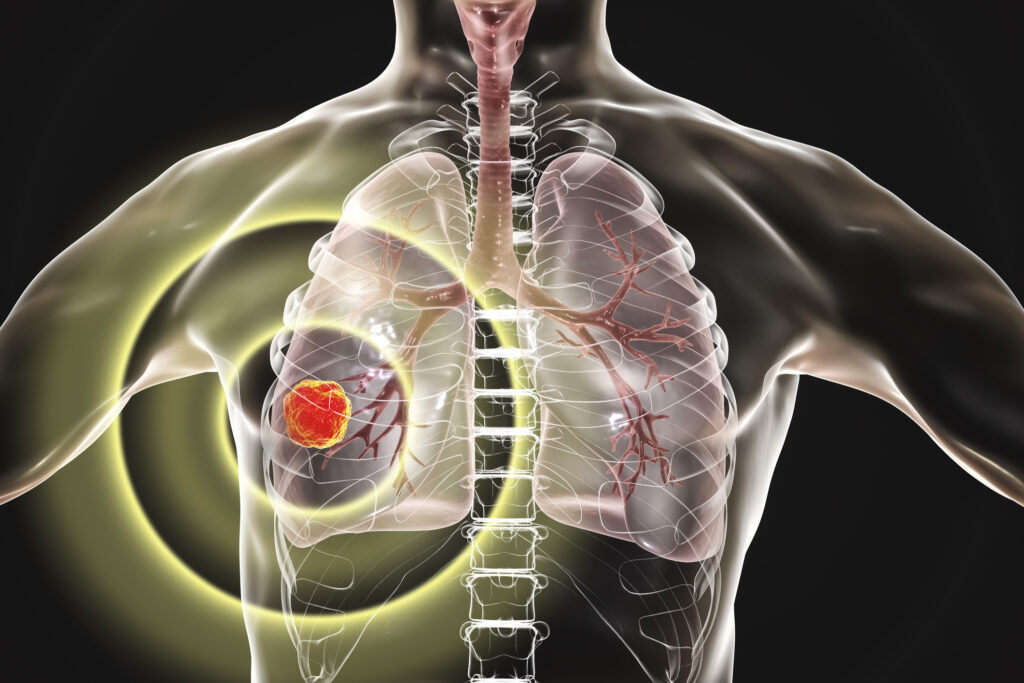Summary: Theranostics combines diagnostic and therapeutic strategies, aiming to tailor treatments for individual patients based on precise data gathered from advanced imaging and biomarkers. Radiotheranostics is sometimes mistaken for the entire field of theranostics because it also integrates diagnosis and therapy, but it specifically focuses on radiopharmaceuticals and radiation-based procedures. This article discusses the essential distinctions between these two approaches, highlighting the broader scope of theranostics, its diverse applications beyond radioactive agents, and the impact both fields may have on personalised healthcare.
Keywords: Theranostics; Radiotheranostics; Personalised Medicine; Biomarkers; Molecular Imaging; Targeted Therapy.
Introduction to Targeted Therapy
In modern medicine, the concept of integrating diagnosis and therapy has led to remarkable progress in patient care. As diseases become more complex, healthcare professionals require novel methods to identify and treat conditions with accuracy. One concept that has gained a great deal of attention is theranostics. By uniting precise diagnostic tools with targeted therapeutic strategies, theranostics aims to tackle diseases more efficiently while minimising side effects. Within this broad framework, radiotheranostics has emerged as a prominent field, relying on radionuclides for diagnostic imaging and concurrent therapy. However, it is vital to recognise that the larger umbrella of theranostics goes well beyond the confines of nuclear medicine.
Radiotheranostics has demonstrated significant potential in treating cancer, where radioactive compounds are used to eradicate tumour cells while allowing for real-time imaging of their effects. Although these techniques are invaluable, they constitute just one component of a wide array of options encompassed by theranostics. A common misconception arises when individuals consider radiotheranostics synonymous with theranostics as a whole.
The Concept of Theranostics
Theranostics can be defined as the integration of diagnostic information and therapy within a unified, patient-centred framework. Medical professionals gather critical data about a patient’s disease subtype, molecular characteristics, and potential risk factors, then formulate a therapy that directly targets those specific attributes. This approach is grounded in three fundamental principles:
- Precision: Treatments are determined by predictive biomarkers or advanced imaging techniques, ensuring that patients receive targeted interventions suited to their unique disease profile.
- Personalisation: By selecting therapies based on molecular or genetic insights, clinicians can craft care regimens that are more effective and reduce the likelihood of severe side effects.
- Feedback Loop: Diagnostic imaging and biomarker monitoring are conducted throughout the treatment phase, allowing medical teams to refine or alter therapies promptly.
Applications Beyond Radiopharmaceuticals
Theranostics is not limited to radioactive compounds. It may use small molecule drugs, monoclonal antibodies, cellular therapies, or gene-editing techniques as both diagnostic and therapeutic tools. For example, certain targeted chemotherapies are linked with companion diagnostics that verify the presence of specific molecular targets within a patient’s tumour. If the corresponding molecular target is detected, the therapy is administered, helping to ensure optimal efficacy.
Gene therapy solutions also align with the theranostic model. An example is the detection of a mutated gene that contributes to a disease, followed by the administration of a gene-editing or gene-replacement therapy specifically designed to correct or compensate for that mutation. Similarly, immunotherapies can be paired with biomarkers that forecast patient response, enabling clinicians to identify who is most likely to benefit from a particular immunotherapeutic agent.
Radiotheranostics: The Key Differences
Radiotheranostics stands out for its specific reliance on radiopharmaceuticals for both diagnosis (using radioactive tracers) and therapy (using radioactive isotopes). This dual modality has become an essential part of nuclear medicine, particularly in oncology, where imaging techniques such as single-photon emission computed tomography (SPECT) and positron emission tomography (PET) scans are combined with targeted radioisotopes. These isotopes latch on to tumour cells and eradicate them while minimising exposure to healthy tissues.
Although radiotheranostics has garnered much attention in recent years, it is only a subset of the more extensive theranostic domain. Here are the key distinctions:
Therapeutic Mechanism:
Theranostics: Encompasses any combination of diagnostic and treatment modalities, including targeted chemotherapy, immunotherapy, gene therapy, or radioactive agents.
Radiotheranostics: Primarily uses radiation-based agents to locate and destroy diseased cells.
Diagnostic Tools:
Theranostics: Employs a spectrum of diagnostic techniques, from genetic testing to advanced imaging, biomarker screening, and molecular assays.
Radiotheranostics: This relies on nuclear imaging scans such as PET and SPECT to track radiolabelled molecules.
Therapeutic Targets:
Theranostics: Applicable to a broad range of conditions beyond oncology, including cardiovascular, neurological, and infectious diseases, through various targeted approaches.
Radiotheranostics: Primarily directed at certain types of cancer, where tumours have targets capable of binding radiopharmaceuticals effectively.
Complexity and Resource Requirements:
Theranostics: Although it can demand advanced molecular diagnostics, it does not necessarily require the infrastructure and safety considerations inherent to nuclear medicine.
Radiotheranostics: Usually calls for significant investment in specialised facilities that adhere to strict safety protocols due to radioactive materials.
By acknowledging these differences, healthcare professionals, researchers, and patients gain clearer insight into the breadth of theranostics. Radiotheranostics undoubtedly holds substantial promise, but it is only one piece of a much larger puzzle.
Clinical Applications and Examples
Theranostics and radiotheranostics each offer compelling clinical applications. In order to illustrate how these two fields differ, it is useful to look at practical examples.
Prostate Cancer
- Theranostics Approach: For prostate cancer, biomarkers such as prostate-specific antigen (PSA) levels guide diagnosis and treatment decisions. Some therapies may focus on genetic features, while others leverage immunotherapies designed to target particular cell-surface proteins.
- Radiotheranostics: The prostate-specific membrane antigen (PSMA) is a widely recognised target for radiolabelled diagnostic and therapeutic agents. PET tracers, such as Ga-68-PSMA, allow visualisation of metastatic lesions, and therapy with lutetium-177-labelled PSMA agents destroys tumours.
Breast Cancer
- Theranostics Approach: Hormone receptor status and the overexpression of HER2 can determine whether therapies like tamoxifen or trastuzumab are suitable. Companion diagnostics, such as immunohistochemistry assays or fluorescence in situ hybridisation (FISH), confirm these targets, ensuring patient-tailored treatment.
- Radiotheranostics: Although breast cancer is less frequently treated with radiotheranostic methods, researchers are developing radiolabelled antibodies and peptides to detect and treat tumours that overexpress specific markers.
Neuroendocrine Tumours
- Theranostics Approach: Blood tests for chromogranin A, combined with advanced imaging, help define disease characteristics and therapy options, which might involve somatostatin analogues, targeted drugs, or surgical resection.
- Radiotheranostics: Neuroendocrine tumours often express somatostatin receptors. PET imaging with Ga-68-labelled somatostatin analogues pinpoints the tumour, and therapy with Lutetium-177 or Yttrium-90-laden analogues selectively attacks tumour cells.
Infectious Diseases
- Theranostics Approach: In certain infectious diseases, next-generation sequencing can identify the presence of antibiotic-resistance genes, providing guidance on targeted antimicrobial therapy. Molecular assays also track disease progression and guide decisions on dose adjustments.
- Radiotheranostics: Radioisotopes are less commonly utilised in this sphere, as targeted antibiotics or antiviral treatments rely on biochemical mechanisms rather than radiation to eliminate pathogens.
In each scenario, radiotheranostics constitutes a focused technique within the larger strategic map of theranostics. While the role of radiopharmaceuticals may be central in specific cancers, theranostics extends much further, incorporating any method that marries diagnostic clarity with a therapeutic effect.
Challenges and Ethical Considerations
Any medical approach that merges diagnosis and treatment faces a number of hurdles, and theranostics is no exception. From a clinical perspective, the development of new biomarkers and therapeutic agents can be time-consuming and expensive. Regulatory processes can slow access to crucial therapies, and ethical concerns arise when potential benefits must be balanced against unknown long-term risks.
Funding and Accessibility
Implementing theranostic protocols can demand significant financial resources. While radiotheranostics usually necessitates facilities that can produce, handle, and dispose of radioactive materials safely, the broader application of theranostics also requires equipment and expertise in molecular diagnostics, gene editing, and advanced therapies. Ensuring that patients everywhere have equitable access remains a significant obstacle.
Privacy and Data Security
Theranostics relies heavily on genetic, molecular, and clinical data to customise treatments. Stringent privacy measures must be in place to protect sensitive information. Genetic data, in particular, can reveal predispositions to various illnesses, raising ethical questions regarding employment, insurance, and personal privacy.
Informed Consent and Patient Understanding
When patients are offered a theranostic intervention, they need to understand not only the immediate therapeutic goals but also the implications of ongoing diagnostic monitoring. With radiotheranostics, discussions should address potential radiation risks, even though therapeutic doses are designed to be safe for most individuals. In all cases, transparent communication enables patients to weigh benefits, risks, and alternatives thoroughly.
Future Prospects of Theranostics
As biomedical research evolves, theranostics is anticipated to play an increasingly significant role in creating personalised healthcare solutions. Here are some emerging directions that point to the future of theranostics:
Advanced Biomarker Discovery: Researchers are identifying and validating a growing array of biomarkers for different diseases. Liquid biopsies that capture circulating tumour cells or cell-free DNA may soon provide convenient and less invasive ways to monitor disease progression and response to therapy.
Gene Editing and RNA-based Therapies: Tools like CRISPR-Cas9 and RNA interference hold promise for targeted modifications. By coupling these techniques with diagnostic assays, clinicians may, one day, treat a disease-causing mutation accurately after confirming its presence through a companion test.
Artificial Intelligence and Machine Learning: As data sets grow ever larger, artificial intelligence will be indispensable in interpreting imaging results, genomic data, and clinical outcomes. Automated analysis can reveal subtle patterns, guiding the design of personalised treatment regimens with unprecedented precision.
Multi-Omic Integration: Beyond genomics, researchers are tapping into transcriptomics, proteomics, and metabolomics to gain a holistic picture of disease. Integrating these layers of data amplifies the power of theranostics, ensuring that the most appropriate treatment is chosen at the right time.
Non-Oncological Applications: Although much research has focused on cancer, other disease areas stand to benefit from theranostic approaches. Neurological disorders, cardiovascular diseases, and autoimmune conditions may all be addressed more effectively by pairing targeted therapies with precise diagnostic tools.
Conclusion
Theranostics is often credited with redefining how diseases are understood and treated, laying the groundwork for personalised medicine. However, it is more than just radiotheranostics. While radiotheranostics uses radioactive compounds for diagnosis and therapy, theranostics encompasses any scenario in which diagnostic insights guide targeted treatments. This wider category includes developments in immunotherapy, gene editing, molecular diagnostics, and targeted drug delivery, to name just a few.
A thorough appreciation of the distinction between theranostics and radiotheranostics has important consequences for the future of healthcare. If radiotheranostics is mistaken for the totality of theranostics, some innovative therapies and diagnostic breakthroughs may be overlooked. Conversely, if clinicians appreciate the broad scope of theranostics, they will be better placed to adopt strategies that precisely match individual patient needs.
In an era increasingly dominated by molecular data and rapid technological progress, theranostics stands at the forefront of a shift in clinical practice. By integrating diagnostics and therapy in a single, personalised framework, it offers new ways to tackle complex conditions. Radiotheranostics plays an essential part in that vision, but it remains only one piece of the overall strategy. A balanced perspective recognising these differences is indispensable for accelerating medical innovation and improving patient outcomes worldwide.
Disclaimer
The information provided in this article by Open Medscience is intended for general educational and informational purposes only. It is not intended to serve as medical advice, diagnosis, or treatment for any health condition. Readers should consult qualified healthcare professionals regarding any medical concerns or decisions. While every effort has been made to ensure the accuracy of the content at the time of publication, scientific knowledge and clinical practice evolve, and Open Medscience accepts no responsibility for errors, omissions, or consequences arising from the use of this information. The views expressed are those of the authors and do not necessarily reflect the official policy or position of any affiliated institutions or organisations.
